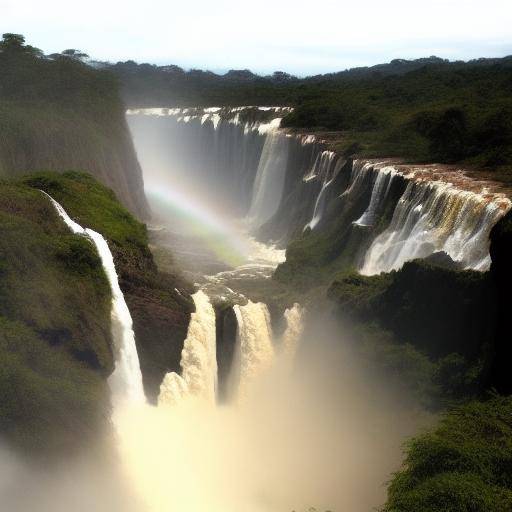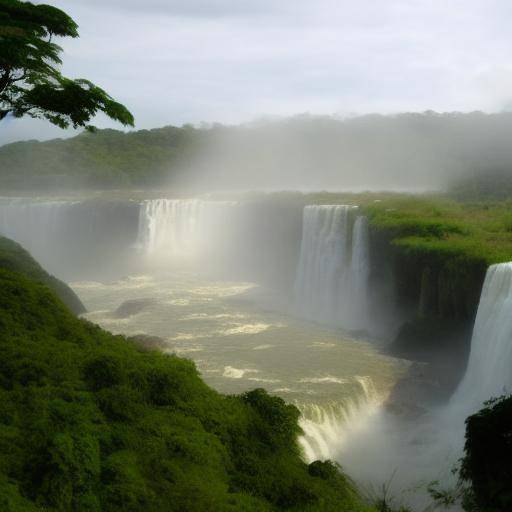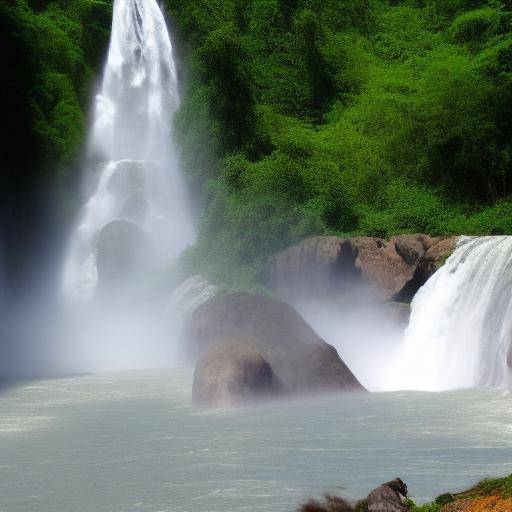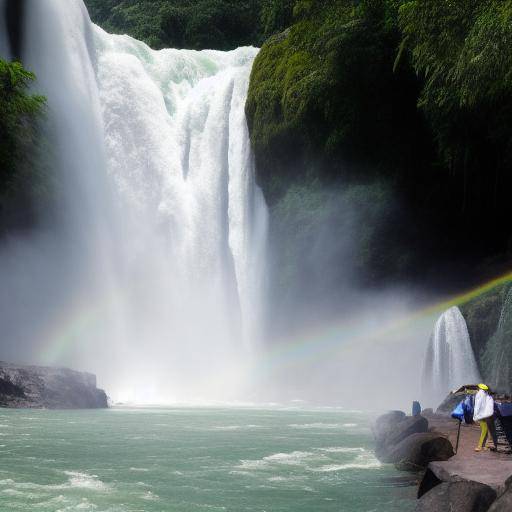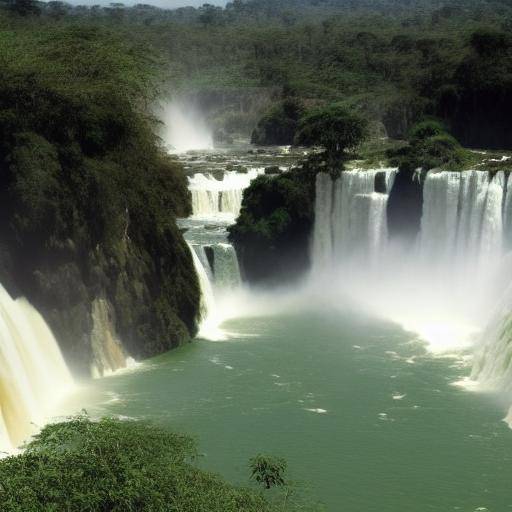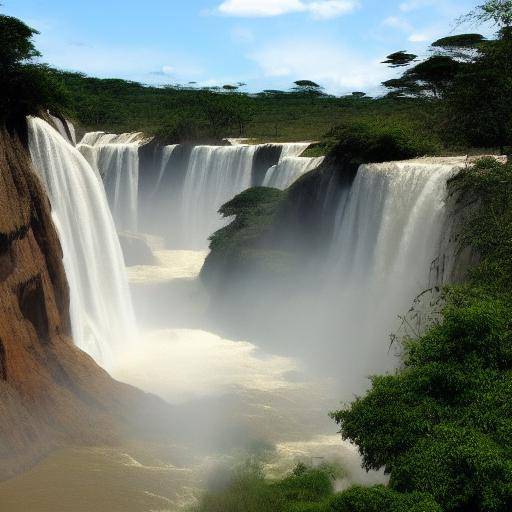
The Victoria Falls, located between Zimbabwe and Zambia, are one of the most impressive natural wonders in the world. They are locally known as "Mosi-oa-Tunya" in Zambia and "Mosi-oa-Tunya" in Zimbabwe. These majestic waterfalls offer a unique experience that combines natural beauty, fascinating history and a diversity of wildlife. In this article, we will explore in detail the Victoria Falls, along with the history and cultural significance of Zimbabwe and Zambia, plunging into the rich heritage of this region and the natural wonders that characterize it.
Introduction
The Wonder of the Victoria Falls
The Victoria Falls are located in the Zambeze River, one of the largest rivers in Africa, and are known for their majesty and unparalleled beauty. With a height of more than 100 meters and a width of more than 1,700 meters, Victoria Falls form the largest water curtain in the world, creating an impressive view that attracts millions of tourists every year. In addition to its impressive natural beauty, the cataracts play a fundamental role in the ecology and history of the region, making them a truly exceptional travel destination.
In this article, we will explore the Victoria Falls in depth, their impact on the surrounding region and the unique experiences that offer adventurous travelers. In addition, we will immerse ourselves in the rich history and culture of Zimbabwe and Zambia, highlighting its distinctive features and points of interest. From its tourist attractions to its rooted traditions, Zimbabwe and Zambia offer a myriad of enriching experiences that deserve to be explored.
History and Context
Origins and Significado Cultural
The Victoria Falls, known locally as "Mosi-oa-Tunya" in Zambia and "Mosi-oa-Tunya" in Zimbabwe, have a profound cultural and spiritual importance for local communities. For centuries, these impressive waterfalls have been venerated as sacred places and have played a central role in the traditions and beliefs of the people who have inhabited the region. In addition, the cataracts have witnessed significant historical encounters and left an indelible mark on the cultural and folkloric narrative of Zimbabwe and Zambia.
The arrival of the European colonizers in the nineteenth century brought with it greater recognition and appreciation of the Victoria Falls worldwide. Explorers, missionaries and adventurers were amazed by the magnificence of the cataracts, spreading their renown through stories that captured the imagination of the world. This period also marked the beginning of tourism in the region, paving the way for Victoria Falls to become one of the main tourist attractions on the African continent.
Significant Developments and Reflection Points
The modern history of the Victoria Falls is marked by several significant developments that have contributed to their global recognition. The construction of tourist infrastructures, such as luxury hotels and national parks, has boosted tourism growth in the region, providing economic opportunities and fostering environmental conservation. In addition, the inclusion of Victoria Falls in the UNESCO World Heritage List has strengthened its status as a natural treasure of incalculable value.
The increase in sustainable tourism and the approach to environmental preservation have been key pillars in the future development of Victoria Falls. As the surrounding countries, Zimbabwe and Zambia, work together to manage and protect this invaluable natural resource, it has become clear that the legacy of the falls transcends national borders and extends to the global community as a whole.# The Wonderful Victoria Falls: A Natural Treasure between Zimbabwe and Zambia
The Victoria Falls, located between Zimbabwe and Zambia, are one of the most impressive natural wonders in the world. They are locally known as "Mosi-oa-Tunya" in Zambia and "Mosi-oa-Tunya" in Zimbabwe. These majestic waterfalls offer a unique experience that combines natural beauty, fascinating history and a diversity of wildlife. In this article, we will explore in detail the Victoria Falls, along with the history and cultural significance of Zimbabwe and Zambia, plunging into the rich heritage of this region and the natural wonders that characterize it.
Introduction
The Wonder of the Victoria Falls
The Victoria Falls are located in the Zambeze River, one of the largest rivers in Africa, and are known for their majesty and unparalleled beauty. With a height of more than 100 meters and a width of more than 1,700 meters, Victoria Falls form the largest water curtain in the world, creating an impressive view that attracts millions of tourists every year. In addition to its impressive natural beauty, the cataracts play a fundamental role in the ecology and history of the region, making them a truly exceptional travel destination.
In this article, we will explore the Victoria Falls in depth, their impact on the surrounding region and the unique experiences that offer adventurous travelers. In addition, we will immerse ourselves in the rich history and culture of Zimbabwe and Zambia, highlighting its distinctive features and points of interest. From its tourist attractions to its rooted traditions, Zimbabwe and Zambia offer a myriad of enriching experiences that deserve to be explored.
History and Context
Origins and Significado Cultural
The Victoria Falls, known locally as "Mosi-oa-Tunya" in Zambia and "Mosi-oa-Tunya" in Zimbabwe, have a profound cultural and spiritual importance for local communities. For centuries, these impressive waterfalls have been venerated as sacred places and have played a central role in the traditions and beliefs of the people who have inhabited the region. In addition, the cataracts have witnessed significant historical encounters and left an indelible mark on the cultural and folkloric narrative of Zimbabwe and Zambia.
The arrival of the European colonizers in the nineteenth century brought with it greater recognition and appreciation of the Victoria Falls worldwide. Explorers, missionaries and adventurers were amazed by the magnificence of the cataracts, spreading their renown through stories that captured the imagination of the world. This period also marked the beginning of tourism in the region, paving the way for Victoria Falls to become one of the main tourist attractions on the African continent.
Significant Developments and Reflection Points
The modern history of the Victoria Falls is marked by several significant developments that have contributed to their global recognition. The construction of tourist infrastructures, such as luxury hotels and national parks, has boosted tourism growth in the region, providing economic opportunities and fostering environmental conservation. In addition, the inclusion of Victoria Falls in the UNESCO World Heritage List has strengthened its status as a natural treasure of incalculable value.
The increase in sustainable tourism and the approach to environmental preservation have been key pillars in the future development of Victoria Falls. As the surrounding countries, Zimbabwe and Zambia, work together to manage and protect this invaluable natural resource, it has become clear that the legacy of the falls transcends national borders and extends to the global community as a whole## Deep analysis


